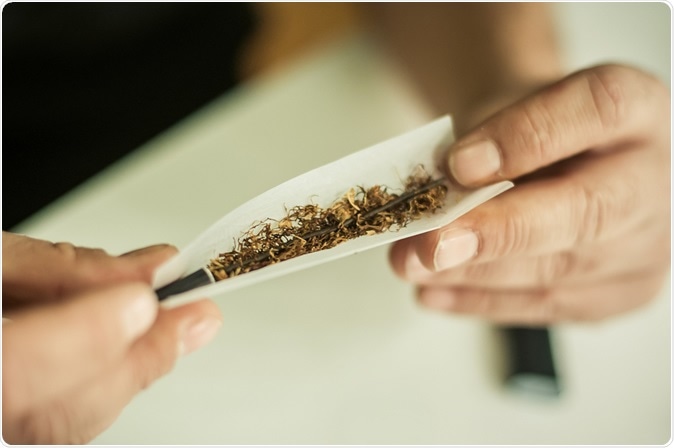A new study has shown that at least 400,000 cases of adults with depression in the US could have been avoided if greater measures were in place to discourage teenage use of cannabis. The results of this new study were published this week in the latest issue of the journal JAMA Psychiatry.

Image Credit: GuruXOX / Shutterstock
The study from researchers at Canada and Oxford University reveals that teenagers aged less than 18 years often try cannabis and this raises their risk of getting depression and suicidal thoughts later in life. They urge policy makers and health advocates to take measures to prevent teenagers from trying cannabis.
Public awareness and education regarding the long term harmful effects of cannabis is necessary for prevention of depression they add. Professor Andrea Cipriani, author of the study from the University of Oxford, said, “The proportion of people with depression where that would not occur if the population did not use cannabis is around 7 per cent. This equates to around 400,000 cases of depression in the US, 25,000 in Canada or around 60,000 cases of depression in the UK which would be avoided if adolescents no longer used it.” Cipriani called this a “big public health and mental health problem.”
The experts have all agreed that in the UK around 4 percent teenagers aged between 11 and 15 years were using cannabis in the previous months and if this connection with depression were true, it was cause for concern.
The team of researchers looked at 11 other studies which included a total of around 23,000 people. Their drug use was analyzed and mental health was assessed from the time when they had first tried cannabis up to the age of 34 years.
Results from the meta-analysis showed that there was no link between cannabis use and anxiety disorders. However with depression, there was a 37 percent rise in a person’s risk with trying cannabis. Dr Cipriani said cannabis could not be blamed alone for the depression and there were other lifestyle, family, socioeconomic and social factors at play here.
Dr Gabriella Gobbi, from the McGill University in Canada and first author of the study said, “Some teenagers think because it’s a plant it’s without harm. It’s important to inform adolescents about the risks and the kind of cannabis they use. Today, unlike the 1980s and 1990s where THC concentration was about 6 per cent, we now we have joints of 10-15 per cent THC or more.” THC is tetrahydrocannabinol – the main psychoactive constituent of cannabis. It is one of the 113 cannabinoids present in cannabis.
Professor Cipriani said, “Although the size of the negative effects of cannabis can vary between individual adolescents and it is not possible to predict the exact risk for each teenager, the widespread use of cannabis among young generations makes it an important public health issue.” He explained, “Regular use during adolescence is associated with lower achievement at school, addiction psychosis and neuropsychological decline, increased risk of motor vehicle crashes, as well as the respiratory problems that are associated with smoking, .my bottom line message is… to avoid using cannabis,” he said.
Source:
https://jamanetwork.com/journals/jamapsychiatry/article-abstract/2723657